The Latest from Boing Boing |  |
- Chip Sounds
- DRM-free, free-as-in-beer Dutch Little Brother ebook
- Arrr, This be pleasin' to me uterus
- Karen Armstrong's TED Prize: Charter for Compassion
- 100-word fiction competition — win an HP MediaSmart EX495
- Silly udder pitcher
- Senators draw maps of their home states
- The decline of civilization symbolized in a modern light socket
- Scooby Doo Apocalypse tee
- How to make an electric bass guitar from a 2X4
- Peter Bagge comic about Ayn Rand
- Happy birthday, LSD
- The Senster - robotic sculpture from the late 1960's
- After parties held in abandoned newspaper boxes
- Conservative children's book vilifies Nancy Pelosi
- Laser interface for bionic limbs
- Lou Jing, half black Chinese girl, sparks race debate in China
- Springy origami toy made from a sheet of paper
- Leopard seal teaches photographer how to catch penguins
- Animation: Lil Cthulhu
- Laughing Squid at Kennedy Space Center for shuttle launch
- H1N1: It's Pronounced "Hiney"
- Great shots from the Boing Boing Flickr pool
- Is There Really A Water Crisis?
- A call to leak photos documenting torture in Iraq and Afghanistan
- Music video with naked human furniture: Valley Lodge
- New story podcast: MARTIAN CHRONICLES
- Call of Duty: Secret Spielberg Level Unlocked
- Clémentine Henrion's Eternal Balloons made from fabric
- Slo-mo demolition of iconic Philadelphia Drexel smokestack
| Posted: 16 Nov 2009 02:22 PM PST  Photo: Mikael Altemark Plogue's Chipsounds recreates the audio produced by eight vintage computer systems. The designers claim that it's the most accurate emulator yet, letting artists make authentic old-school tunes with the latest music-making software. "Chip music sounds like nothing else," said David Viens, who co-founded the Canadian developer in 2000. "It boasts a totally separate sonic spectrum than the other forms of electronic music. It brings back fond memories." Mimicking vintage hardware like the AY-3-8910 (arcade games), POKEY (Atari 400/800) and the legendary MOS Technology SID (Commodore 64), Chipsounds plugs into apps such as Logic Pro and GarageBand. According to the blurb, musicians can even use the same "abusive" technical tricks that gave the original machines a creative lifespan far beyond their commercial shelf lives. Most extant emulators fall short of perfection, leading chiptune musicians to do it the hard way, hand-programming ancient hardware or buying expensive recreations. Seth And Michelle of chiptune duo 8 Bit Weapon (free downloads), for example, produce their own albums and create music for the likes of Disney, Nokia, Microsoft and Sony. "Emulators are usually a taste of what you are trying to achieve," they wrote in an email. "For instance, SIDplay is an emulator that plays Commodore 64 game tunes without having to load the game to hear the music. ... Although it sounds a lot like a real C64, it's missing a lot of subtle nuances the SID chip is known for, such as the phat analogue style filters and warmth." Chipsounds, however, nails it: "We couldn't believe how good the emulations were for the chips," said Seth. Viens, whose favorite chip is Atari's TIA ("Raw, powerful, can make awesome basses and leads"), says that his interest in music and sound began at a young age: a VIC-20 and a Colecovision were his first platforms. "Another lucky kid on the block had a C64, and I remember I brought a tape recorder in order to record the sound and music it made, so that I could convince my dad how good it was, to help my case." With two other computer science grads at the Université de Montréal, he founded Plogue in 2000 to develop experimental music software. Bidule, which lets the musician hook sound-making modules together with a tentacular mass of virtual cables, was popular enough to encourage them quit successful day jobs as programmers. They soon scored contracts in the industry, allowing them to "indulge" the sound of classic gaming: trawling eBay and yard sales, buying old music-related cartridges for obsolete game consoles, and building DIY synths with whatever could be found. Viens, however, found that the clunky hardware worked at odds with his inspiration: "The logic/geek part of the brain and the musically inspired one are very separate." Dissatisfied with existing emulators' poor rendering and poor Mac support--not to mention the fact that no-one had yet attempted to analyze and emulate some classic audio chips--they set about developing Chipsounds. Freeing musicians from having to acquire, set up and program vintage hardware is no mean feat. To emulate integrated circuits, Viens would mount original chips on breadboard, develop custom software to send the commands they understand, and then sample the output at 192Khz 24-bit PCM audio. The samples were then analyzed to uncover the mathematical models that generated them. Though the same technique as used by many others, Viens said that the usual focus on game emulation results in variable quality. Chipsounds represents the first time a whole set of chips has been emulated by a team of"sound maniacs." But it's still not perfect in every respect. Each console has its quirks and secrets, and the most difficult to model was the SID chip. "I can't say that our emulation of it is perfect, but we hope to get it there one day. It's like this great mystical quest." To non-fans, that "mystical" element may seem at odds with the music's superficial primitiveness. Part of the appeal comes from its clarity, its uncompromising electronic purity. Musicians also enjoy how chip music's limitations force them to focus on the basics, like melody and structure. But it's also fed by nostalgic memories of childhood, of hours spent bathed in square waves and glowing phosphors. "Thats why many chiptune/micromusic artists tend to gravitate toward one machine to do their music with," said Seth. "It tends to be the one they grew up with. ... Many young people today had never been exposed to the lo-fi glory that is 8 bit chip music. To the new generation, these are raw, almost punk-esque soundscapes that they are just discovering." Chipsounds is $95 and available from the product page. |
| DRM-free, free-as-in-beer Dutch Little Brother ebook Posted: 17 Nov 2009 03:41 AM PST Uitgeverij De Vliegende Hollander is the Dutch publisher for Little Brother, and they've really put a big push behind it. Unfortunately, they're also locked into distributing their catalog as DRM-crippled ebooks through an online retailer that is the only major ebook vendor in the Netherlands. But they're good folks at my publisher, and they're not fond of DRM either. When I asked them if there was some way we could sell the ebook without DRM, they told me that it was impossible (only one major ebook vendor, remember?), but would I mind if they just gave away the ebook in DRM-free ePub form? Would I mind? That's a dandy solution! Here's a link to the free, DRM-free Dutch ePub version of Little Brother. Tell your (Dutch) friends, and be sure to stay clear of that infected DRM copy that's being sold. Little Brother ePub (DRM-free) (Thanks, Rienk!) |
| Arrr, This be pleasin' to me uterus Posted: 16 Nov 2009 10:20 PM PST |
| Karen Armstrong's TED Prize: Charter for Compassion Posted: 16 Nov 2009 08:25 PM PST Bonnoe says: "The folks at the TED Prize have been working with partners around the world to fulfill the wish of best-selling author and former nun, Karen Armstrong – the Charter for Compassion. The Charter is a document collaboratively written with contributions from thousands of people from more than 100 countries. With a sense of urgency, the Charter is a call to action for all of us to live more compassionately with each other in the hopes of ending global suffering. People from every corner of the world – including Oslo, Buenos Aires, Vancouver, Tehran, Capetown, Sydney, San Francisco, Mumbai and more - have embraced the Charter's inclusive message by affirming the Charter at the Charter for Compassion website and posting the official widget on their blogs in a show of solidarity (see below). It's a powerful message and one that we wanted to share." |
| 100-word fiction competition — win an HP MediaSmart EX495 Posted: 16 Nov 2009 07:50 PM PST  The prize is a $700 HP MediaSmart EX495 PC, set up as a Windows home server, with 1.5TB of storage and Mac/Time Machine support. The winner shall be chosen at arbitrary whim. Runners-up get something random from the gadget dungeon. The theme is "Found in Space." 100 words long. Go! The prize is a $700 HP MediaSmart EX495 PC, set up as a Windows home server, with 1.5TB of storage and Mac/Time Machine support. The winner shall be chosen at arbitrary whim. Runners-up get something random from the gadget dungeon. The theme is "Found in Space." 100 words long. Go! |
| Posted: 16 Nov 2009 04:41 PM PST  I got all the enjoyment I can get from this picther by looking at the photo. No need to spend $22, as the milk I buy already comes in a carton. Heffer pitcher |
| Senators draw maps of their home states Posted: 17 Nov 2009 01:10 AM PST  Marilyn sez, "To kick off Geography Awareness Week, National Geographic asked all the senators in Congress to draw their home states freehand. Some of the results are pretty funny!" (Shown here: Al Franken's cartographically masterful Minnesota rendering) Senators: Can You Draw Your State? (Thanks, Marilyn!) Previously: |
| The decline of civilization symbolized in a modern light socket Posted: 16 Nov 2009 03:31 PM PST Recently I was replacing an old socket in a recessed ceiling fixture in our kitchen. The insulation on the wire was very old. Here's what the old socket looked like: It was coated with gradoo, so I went to the local hardware store and bought a spanking new socket: When I got home, I discovered that the wires on the socket weren't long enough to make it to the junction box. I couldn't replace the short wires with longer ones because they were riveted to the socket. This is a crappy, user-hostile design. When the wires go bad, you have to throw the entire thing away. Fortunately, I still had the old light socket, and I had some extra wire, so I was able to rewire the old light socket. Hurray for repairable stuff of yesteryear! |
| Posted: 16 Nov 2009 03:08 PM PST |
| How to make an electric bass guitar from a 2X4 Posted: 16 Nov 2009 02:30 PM PST  This 1961 issue of Science & Mechanics features instructions for building an electric bass out of a 2 x 4 (left). Lot of other homemade instrument plans are available at Cigar Box Nation. This 1961 issue of Science & Mechanics features instructions for building an electric bass out of a 2 x 4 (left). Lot of other homemade instrument plans are available at Cigar Box Nation. |
| Peter Bagge comic about Ayn Rand Posted: 16 Nov 2009 12:50 PM PST |
| Posted: 16 Nov 2009 12:32 PM PST "LSD was first synthesized on November 16, 1938 by Swiss chemist Dr. Albert Hofmann at the Sandoz Laboratories in Basel, Switzerland." (Thanks, Mike!) |
| The Senster - robotic sculpture from the late 1960's Posted: 16 Nov 2009 12:03 PM PST Today and Tomorrow has some photos and a video of a cool robotic sculpture from the late 1960s, designed by Edward Ihnatowicz. Senster would be right at home at Maker Faire! The Senster was a robotic sculpture developed by Edward Ihnatowicz in the late 60's. It was commisioned by Philips and part of their permanent showplace, the Evoluon, in Eindhoven between 1970 and 1974. It was the first robotic sculpture to be controlled by a computer and could react to the behaviour of the visitors with its sound and movement sensors. The computer used to control The Senster was a Philips P9201 and had only 8K of core memory. Now, almost 40 years later, every interaction student could make something like this and fit the logic in a small box. But this is still an amazing project.The Senster (Via Mt. Holly Mayor's Office) |
| After parties held in abandoned newspaper boxes Posted: 16 Nov 2009 11:55 AM PST Prankster/artist Jason Eppink threw "Print After Parties" inside newspaper boxes in honor of the the death of print. Very clever. From Eppink's project description: Abandoned by floundering media conglomerates, thousands of neglected newsracks command valuable real estate on busy street corners across New York City, remnants of diminishing demand and a disintegrating economy. Many have already been reclaimed and transformed by urban alchemists, whether as canvases for stickers and paint or clever conceptual works that turn the once important vessels of information into repositories for garbage.Jason Eppink (Thanks, Imaginary Foundation!) |
| Conservative children's book vilifies Nancy Pelosi Posted: 16 Nov 2009 11:18 AM PST  A new conservative children's book titled Help! Mom! The Radicals Are Ruining My Country! prominently features Nancy Pelosi as an evil villain. Author Katharine DeBrecht, whom you may have seen on Fox News, explains: A new conservative children's book titled Help! Mom! The Radicals Are Ruining My Country! prominently features Nancy Pelosi as an evil villain. Author Katharine DeBrecht, whom you may have seen on Fox News, explains: When Nancy Pelosi was elected Speaker of the House all we heard was how wonderful it was that a mother and grandmother rose through the ranks to such a position. In reality, that mother and grandmother has played an enormous role in ensuring that our children and grandchildren are shackled with debt for decades to come. |
| Laser interface for bionic limbs Posted: 16 Nov 2009 10:51 AM PST Researchers are developing a laser-based system to connect the human nervous system to robotic prosthetic limbs. Brain-machine interfaces provide the output for controlling prosthetics but ideally the system would also provide feedback, for example the sensation of picking up an object. The challenge is that electrodes wired to a particular nerve can also zap surrounding nerves, triggering false sensations. Vanderbilt University researchers developed a method to precisely stimulate nerves with pulses of a laser. From IEEE Spectrum: Using a similar laser aimed at the sciatic nerve of laboratory rats, they caused some part of the animal's legs to involuntarily twitch with each laser pulse. A slight movement of the beam across the nerve bundle—which causes the narrow beam to shift its focus from one fiber within the nerve to another—can cause the rat to switch from, say, curling its toes to flexing its foot. Stimulating nerves with lasers, says Anita Mahadevan-Jansen, a professor of biomedical engineering at Vanderbilt and the person who hit upon the idea of using light instead of current, may someday make artificial limbs as dexterous as human arms and might lead to such devices as patches that zap nerves to give relief to chronic pain sufferers..."Engineers Work on Laser-Based Brain-Machine Interface for Prosthetic Arm" (Thanks, Chris Arkenberg!) |
| Lou Jing, half black Chinese girl, sparks race debate in China Posted: 16 Nov 2009 11:14 AM PST  A 20-year old Shanghai woman of mixed race has sparked a discussion about race in China. Lou Jing is half black; she was raised by a Chinese mother and speaks and acts like any other Chinese girl. But when the aspiring TV anchor entered an American Idol-like contest and rapped on-stage, she attracted both sensational admiration and ignorant hate. The presenters adoringly called her "chocolate girl" on stage — meanwhile, on web forums, people called her gross and ugly and criticized her mother for having sex with a black person out of wedlock. In an interview with NPR's All Things Considered, Lou Jing says: "I've always thought of myself as Shanghainese, but after the competition I started to have doubts about who I really am." Lou Jing has never met her dad, who left China without knowing he had gotten her mom pregnant. She hopes to study journalism at Columbia University. A 20-year old Shanghai woman of mixed race has sparked a discussion about race in China. Lou Jing is half black; she was raised by a Chinese mother and speaks and acts like any other Chinese girl. But when the aspiring TV anchor entered an American Idol-like contest and rapped on-stage, she attracted both sensational admiration and ignorant hate. The presenters adoringly called her "chocolate girl" on stage — meanwhile, on web forums, people called her gross and ugly and criticized her mother for having sex with a black person out of wedlock. In an interview with NPR's All Things Considered, Lou Jing says: "I've always thought of myself as Shanghainese, but after the competition I started to have doubts about who I really am." Lou Jing has never met her dad, who left China without knowing he had gotten her mom pregnant. She hopes to study journalism at Columbia University.
Stories about Lou Jing on NPR, Time, Shanghai Daily Image via Shanghai Daily |
| Springy origami toy made from a sheet of paper Posted: 16 Nov 2009 01:01 PM PST  Here's a neat spring you can make (if you have a lot of time and patience) by folding a piece of paper. Here's a neat spring you can make (if you have a lot of time and patience) by folding a piece of paper. UPDATE: I changed the link, as the other one might have pointed to malware. Origami Spring, invented by Jeff Beynon (Via Evil Mad Scientists) |
| Leopard seal teaches photographer how to catch penguins Posted: 16 Nov 2009 05:31 PM PST |
| Posted: 16 Nov 2009 10:57 AM PST Lovecraftians rejoice! Thanks to Lil Cthulhu, it's much easier to initiate our young ones into the magic of the Great Old Ones! Animation by Zachary Murray with the voice of Erika Fontana. From the video description: Meet little Cthulhu, who lives in the magic city of R'lyeh with all his friends, as you and your child embark on a fun and educational journey through the world of the Great Old Ones, meeting all kinds of new buddies from the Necronomicon along the way, from Azathoth to Yog-Sothoth! This series has won multiple awards and has been enthusiastically approved by the department of child-developmental psychology at Miskatonic University.The Adventures of Lil Cthulhu (Thanks, Gareth Branwyn!) |
| Laughing Squid at Kennedy Space Center for shuttle launch Posted: 16 Nov 2009 10:59 AM PST  The Space Shuttle Atlantis STS-129 is set for liftoff today and BB pal Scott Beale is a few miles from the launch pad with camera-in-hand. He's participating in the NASA Tweetup at the Kennedy Space Center. Check out Laughing Squid for Scott's launch day photos. "NASA Tweetup At Kennedy Space Center For Launch of Space Shuttle Atlantis STS-129" |
| Posted: 16 Nov 2009 09:27 AM PST  And now there's a T-shirt to prove it. Previously:
|
| Great shots from the Boing Boing Flickr pool Posted: 16 Nov 2009 09:24 AM PST
More: Lukasch's WTF dice and Hashtag challenge; Clever Cake Studio's World of Warcraft Gnome Cake and Firefox Cake; and the droolworthy Xserve+Xraid+Xsan+Xgrid. Add your pic to the Boing Boing flickr pool!. (And please give it a CC license so we can blog it without assuming permission from the pool status.) |
| Is There Really A Water Crisis? Posted: 16 Nov 2009 08:58 AM PST  "When I say there is no water crisis, you must be wondering, 'Is this guy talking to his hat?'" That's how Asit Biswas led off his speech last month at the 2009 Nobel Conference. And--oddly worded idiom aside--he was right. That's exactly what everyone was thinking. The Conference--really a lecture series timed to coincide with the distribution of Nobel Prizes--brings Nobel winners and eminent researchers from around the world to Gustavus Adolphus College in St. Peter, Minnesota. All the lectures orbit a central theme. This year, it was water. Or, rather, the lack of water. Most of the speakers talked about the risk of losing this important resource--how we humans threaten our own water supply, how that puts us at risk for a whole mess of trouble, and how we might be able to tackle the global water crisis. But that crisis is a myth, according to Biswas. He's the president of the Third World Centre for Water Management and winner of the 2006 Stockholm Water Prize, and he says that there's plenty of water to go around. Freaking out about water supply is pointless, he says. Worse, it wastes time and resources that could be used to fix the world's real problem--actually getting the water to the people. To find out more about why Biswas thinks global institutions like the United Nations and the World Bank are dead wrong on water, I called him for a post-Nobel Conference interview. I want to make sure I understand your position correctly. You say there's not a shortage--or coming shortage--of water. That the real problem is infrastructure. Is that correct? But is there really a functional difference between a crisis of scarcity and a crisis of management? Either way, the people don't get water. Can management really make that big of a difference? You used to think there was a water crisis, what led you to change your mind? Let's talk a little more about that efficiency. You say that, in many developing cities, water is currently being lost and, that, if you reduce those losses you could have enough water. Where does that lost water go? But can efficiency and better management really make up for all the uses of water? As population increases, we need to feed more people as well, and that also requires more water. Watch Asit Biswas' Nobel Conference lecture, and follow-up Q&A Large image courtesy Flickr user futureatlas.com, via CC |
| A call to leak photos documenting torture in Iraq and Afghanistan Posted: 16 Nov 2009 08:43 AM PST As blogged previously, the Obama administration is blocking release of photos documenting torture in Iraq and Afghanistan by US forces - ironically, just as Obama speaks against censorship in China. The CPB says, "We think someone with access to the photos should simply leak them on the web, saving tax payers a load of cash and letting people know just what it is our twin occupations are really about." |
| Music video with naked human furniture: Valley Lodge Posted: 16 Nov 2009 08:26 AM PST Funnyman Dave Hill, who stars and performs in the music video embedded above, says, This is the new Valley Lodge video for their song "All of My Loving." It's the story of a man tormented by his apartment furniture. Kind of like a naked Ethan Allen shoving his bait & tackle in your face all day long when all you really want is a hot girl in cute panties.The video was produced with a company called Mekanism. Mr. Hill is doing standup shows this week at LA's UCB Theater, go check him out if you're in town. |
| New story podcast: MARTIAN CHRONICLES Posted: 16 Nov 2009 08:21 AM PST I've just started podcasting a new story: MARTIAN CHRONICLES is a story I'm working on for Jonathan Strahan's forthcoming LIFE ON MARS young adult anthology. It's a story about the colonization of Mars by free-market absolutists and the video-games they play. They say you can't smell anything through a launch-hood, but I still smelled the pove in the next seat as the space-attendants strapped us into our acceleration couches and shone lights in our eyes and triple-checked the medical readouts on our wristlets to make sure our hearts wouldn't explode when the rocket boosted us into orbit for transfer to the *Eagle* and the long, long trip to Mars. |
| Call of Duty: Secret Spielberg Level Unlocked Posted: 16 Nov 2009 08:14 AM PST Video link. From James and Peter Serafinowicz. |
| Clémentine Henrion's Eternal Balloons made from fabric Posted: 16 Nov 2009 08:04 AM PST  Parisian artist Clémentine Henrion created these Helium Eternal Balloons. They're made from fabric. I think the effect is rather lovely. From Henrion's etsy shop: This "illusion" of an helium balloon is entirely made of precious or fancy fabric. There is no helium in this Helium Eternal balloon : it is stuffed with kapok, like a soft pillow. A tiny flap fixed at the top of the balloon helps hanging it to your interior's ceiling, hook it to a curtain rod, the top of a wall etc. The key thing is to hang it up as high as possible, in order to recreate the magic illusion of a real flying helium balloon! The most beautiful effect is obtained in setting a bunch of several balloons together, forming a "balloons bouquet".Clémentine Henrion (Thanks, Kelly Sparks!) |
| Slo-mo demolition of iconic Philadelphia Drexel smokestack Posted: 16 Nov 2009 07:25 AM PST Nicole sez, "Philebrity posted a haunting video of the recent demolition of the Drexel Shaft in Philadelphia. The tripped out music and slowly tumbling smoke stack aptly visualize a crumbling American economy." He's One Bad Mutha- Shut Your Mouth! But I'm Talking About DREXEL SHAFT! (Thanks, Nicole!) Previously:
|
| You are subscribed to email updates from Boing Boing To stop receiving these emails, you may unsubscribe now. | Email delivery powered by Google |
| Google Inc., 20 West Kinzie, Chicago IL USA 60610 | |

 It is old news that Facebook has a language option for Pirate English. But the mundane and bemusing juxtapositions it creates in the ad column never grow old. [Thanks, Heather!]
It is old news that Facebook has a language option for Pirate English. But the mundane and bemusing juxtapositions it creates in the ad column never grow old. [Thanks, Heather!] 





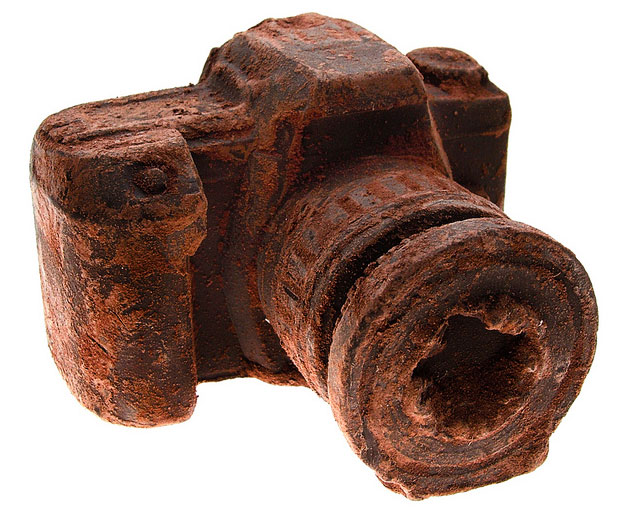
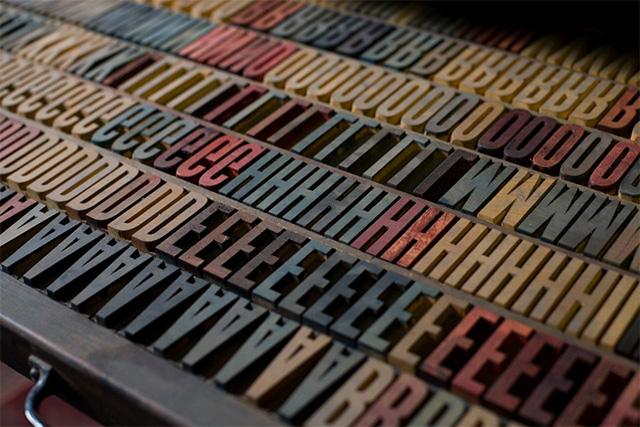


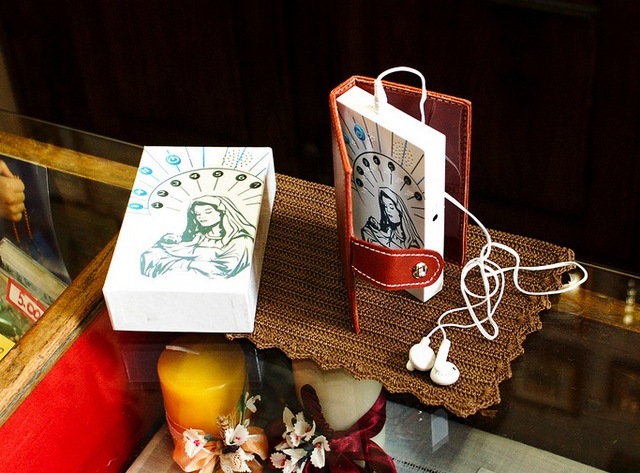
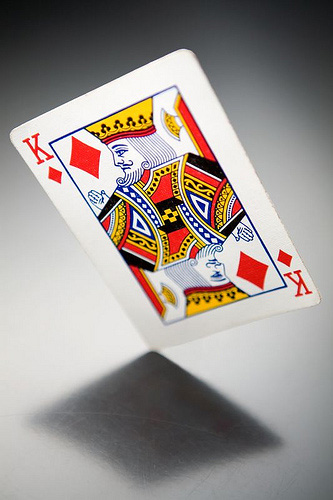

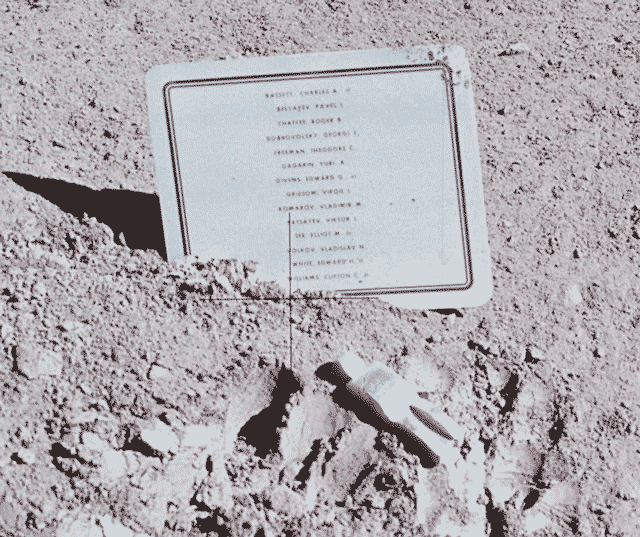
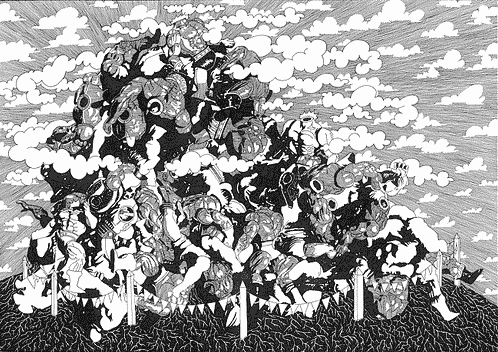
No comments:
Post a Comment